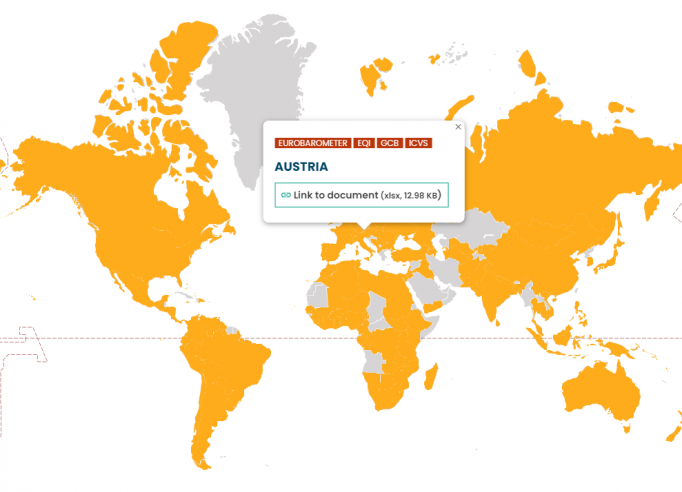New interactive map providing comparative country statistics on corruption in education
To address the issue of corruption in education, decision-makers must have access to reliable data that assess the magnitude of the problem. A number of organizations regularly publish survey-based statistical datasets which provide a good starting point to compare the extent of corruption in various countries and across time. While these data sources typically focus on the perceived general level of corruption, recent editions include an increasing number of indicators targeted at the education sector, which makes them valuable for researchers and policy analysts working on corruption in education.
The new map published by ETICO provides a structured and comprehensive overview of all freely accessible comparative statistical sources on corruption in education in each country and facilitates quick access to data. The map features indicators from eight surveys, namely:
- the Afrobarometer
- the Arab Barometer
- the East African Bribery Index (EABI)
- the Global Corruption Barometer (GCB)
- the International Crime Victim Survey (ICVS)
- the Life in Transition Survey (LiTS)
- the Eurobarometer, and
- the European Quality of Government Survey (EQI).
By clicking on a country, users can download a list of all survey questions and indicators targeted at education that are available for that country. The list also contains links that redirect to the survey webpages for easy access to the complete data sets.
Cross-country and cross-sectoral analysis
With data indicators and survey questions for each country accessible in a single window, the map enables users to identify data sources befitting their purpose. For instance, the East African Bribery Index, which started as the Kenya Bribery Index in the 2000s, now captures indicators such as the share of educational institutions in the ‘national bribe’, and the average size of a bribe in the education sector in Kenya, Rwanda, Tanzania or Uganda. The Life in Transition Survey is a comprehensive household survey undertaken in 2006, 2010 and 2016, measuring indicators such as admission to educational establishments and teacher behaviour.
Country-level survey statistics are useful to help establish a first estimation of the extent of corruption in the education sector and compare its magnitude with/across other sectors and countries. They can also help measure how citizens evaluate the quality of education services and identify areas of improvement. Public and freely accessible, these statistics complement national diagnostic tools, which provide more in-depth information on leakage of funds, teacher absenteeism, and other corruption phenomena.





